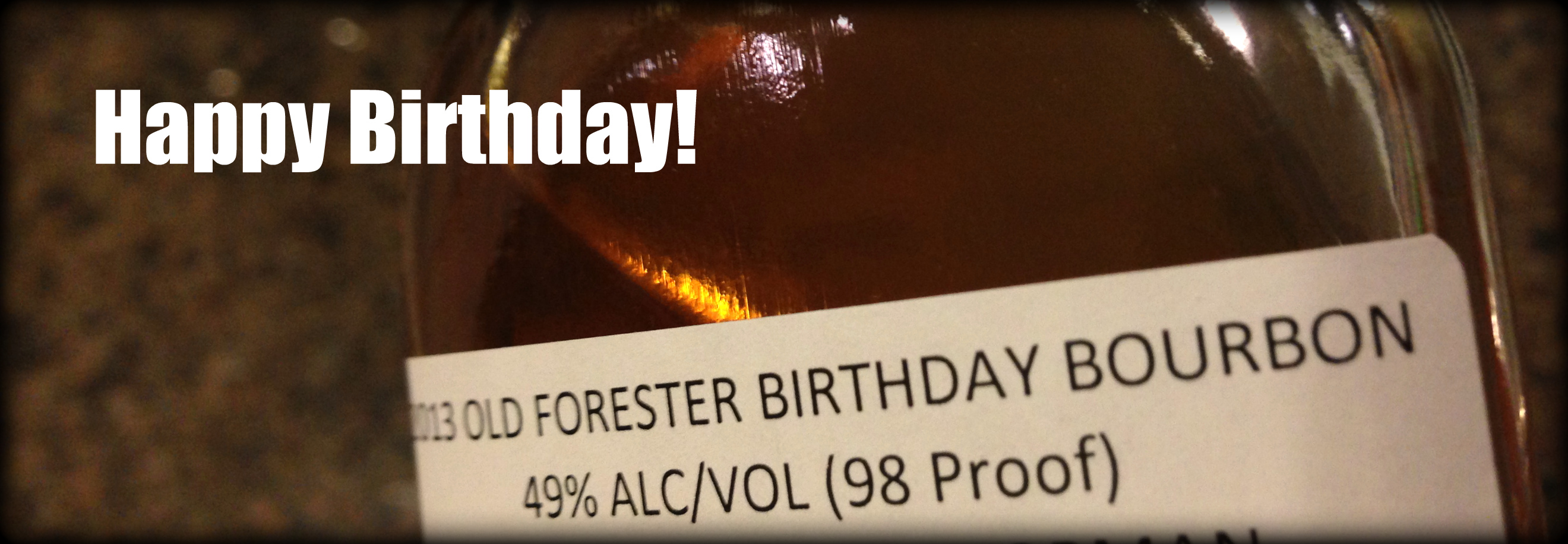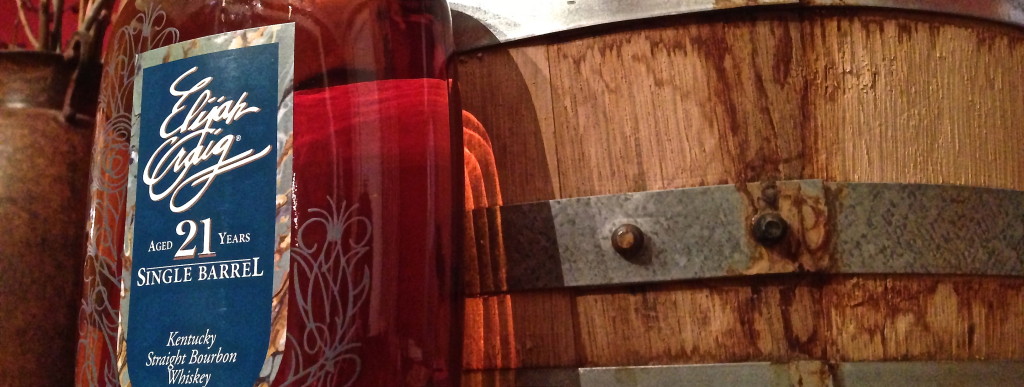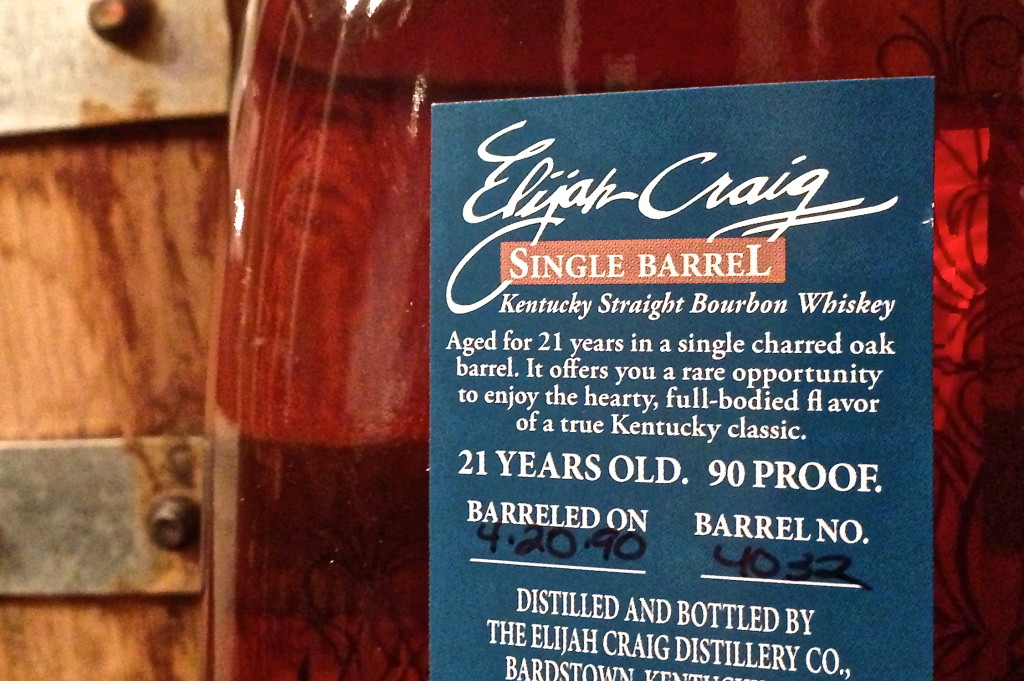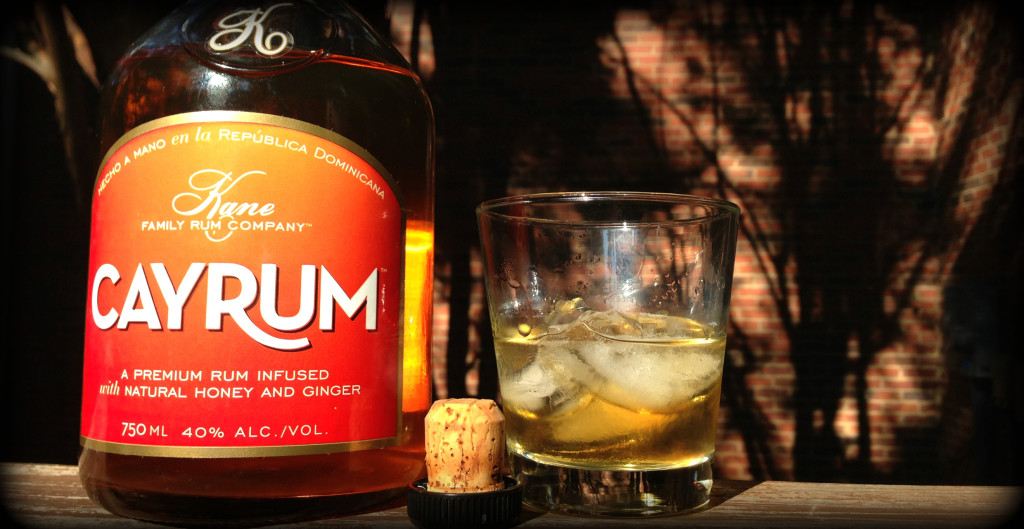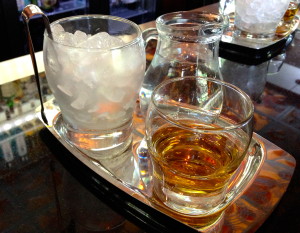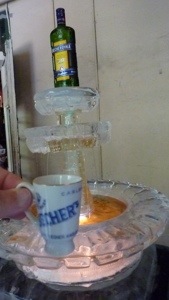Old Forester is old. 140+ years old. They’ve certainly earned the right to celebrate birthdays. For the past twelve years now, Old Forester has released a special “Birthday Bourbon” to celebrate founder George Garvin Brown’s September 2 birthday. I had never actually tried one until this year’s limited edition, which has been getting some really good word of mouth. Jason over at Sour Mash Manifesto called it a “must try” – and he’s not the only one that seems to be enjoying this birthday celebration immensely. John Hansell over on the Whisky Advocate blog called it, “the best tasting (and best balanced) OFBB release in many years.”
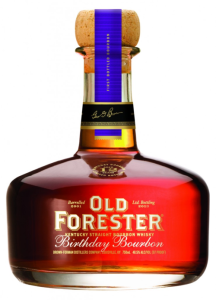 Old Forester Birthday Bourbon, 2013 Limited Bottling
Old Forester Birthday Bourbon, 2013 Limited Bottling
98 Proof
Approx. $55 Retail
Tasting Dates: August 16-September 7, 2013
This small batch limited release was all barreled on a single day in 2001, and it’s evident that this has some good age on it. The color is a nice medium amber, on the way to maple wood. The nose is a knockout, no doubt – warm and sweet, like brown sugar caramel brownies with a healthy hit of vanilla, and a bit of peachy fruit adding some elegance.
Neat, there’s a sharp bite at first when this hits the tongue, but that mellows out pretty quickly to fall in line with the aroma. Good body, long finish, it really reminds me of those cinnamon-dusted, candied almonds that they sell at ballparks or street festivals – the kind where they give you a sample because they know you’ll find it hard not to buy a whole bag. This is nice stuff, for sure, but I don’t think it delivers nearly as well in sipping as it does just for sniffing. Mainly because it feels a bit harsh. Some may say that’s necessary to keep the dark sugar notes in check, but it feels just a touch out of balance to me, especially for the first few seconds of each sip.
With ice, the sharp bite cools down considerably at first, but then jumps back in after a second. It also does well with a touch of water, still assertive, and less overtly sweet.
Thirsty South Rating: Excellent* – I’m a bit torn on this – the nose is a “wow,” but my overall impression actually falls just short of “excellent.” It’s a nice, limited edition bourbon for $55, but I’m not sure it delivers the kind of value at that price that would get me really excited.
*******************************
* Thirsty South Rating Scale:
Wow – among the very best: knock-your-socks-off, profound, complex liquid gold!
Excellent – exceptional in quality and character, worth seeking out, highly recommended
Good Stuff – solid expression of its type/varietal, enjoyable and recommended
Fair – fairly standard or exhibiting obvious though minor flaws
Avoid – move away folks, nothing to see here, a trainwreck
Full Disclosure: Tasting sample provided by Brown-Forman.

